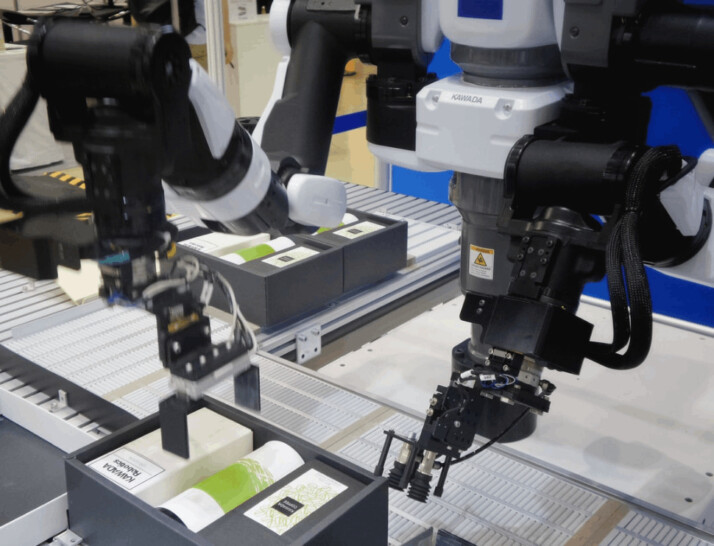AI is a term that means different things to different people. When people think of AI, they often think of human-like machines which mimic intelligent behavior and think uniquely.
The term is also applied to various algorithms and computer programs, which can carry out a variety of superhuman tasks. AI models lie at the core of developments in artificial intelligence. This article helps you understand what an AI modelis and how it works.

What Is an AI Model?
An AI model is an algorithm that relies on training data to identify patterns and make decisions and predictions. The efficiency of an AI model depends on the quantity and quality of its training data. Therefore, the more data points an AI model receives, the more accurately it analyzes and makes decisions.
AI models typically depend on tools like computer vision, ML, and natural language processing to identify different patterns. In addition, they use decision-making algorithms to learn from their training. Ultimately they apply their learning to achieve their predefined goals.
Common Types of AI Model
There are quite a number of different types of AI models. Some of the most common types are:
- Deep neural networks
- Logistic regression
- Linear regression
- Decision trees
- Random forest
- K-nearest neighbor
- Naive Bayes
1. Deep Neural Networks
Deep neural networks are among the most popular type of AI models. Inspired by the structure of the human brain, they are made up of artificial neurons and have more than two layers.
Each layer offers an output value that can be combined with multiple inputs. Deep neural networks have emerged as one of the most powerful models for complex tasks like computer vision and speech recognition.
2. Logistic Regression
When it comes to solving binary classification problems, logistic regression is your best bet. The model is good at predicting the class or value of data points based on independent variables.
3. Linear Regression
Linear regression is a type of supervised machine learning model that allows users to measure the relationship between variables.
With a linear regression model, you can predict the value of a dependent variable based on the value of an independent variable. This model is particularly useful for linear discriminant analysis.
4. Decision Trees
This is one of the simplest and oldest types of AI models. Decision trees learn and interpret answers and responses to various problems and the probable consequence.
A decision tree follows an if/then pattern in its basic form. For instance, if we beat all teams, then we will be crowned champions. Decision trees solve different types of problems and typically don’t need data normalization.
5. Random Forest
Also known as bagging, random forest is an AI model that takes decision trees a step further. If a decision tree can be accurate, why not have a whole forest of decision trees?
Thus, it is a collection of many decision trees. It aggregates the results obtained from each decision tree to find the correct value. Random forest is best suited to tasks with large data sets. It can be deployed for solving regression and classification problems.
6. K-Nearest Neighbor
Also known as k-NN or KNN, the K-nearest neighbors algorithm is used to solve classification and regression problems. It is a non-parametric algorithm that many consider “lazy.” They consider it lazy because it performs no training when supplied with data.
KNN also doesn’t build a model until required. Essentially, KNN classifies a data point by looking at the nearest annotated data point. This is how it got its name.
7. Naive Bayes
This model is based on Bayes Theorem. It is a simple yet powerful solution. The algorithm is used in different classification tasks. It works especially well with natural language processing problems.
The algorithm is a probabilistic qualifier. This means it makes its prediction based on the probability of an object. Despite its simplicity and relative efficiency, the model has a major downside. It assumes that all features are unrelated, meaning it can’t learn the relationship between them.
Conclusion
In the near future, AI algorithms will be used in various fields, from business to science. The growing field of AI is creating new levels of efficiency and reliability, making AI models and their implications increasingly important.
Artificial intelligence models can be used as a tool to help humans make sense of data. Computer models are capable of finding patterns and connections that we cannot see or anticipate.
Explore All AI Words Articles
Use Quality SEO Automation to Increase Traffic
The internet has liberalized information access. Anyone that hopes to drive engagement only needs to put out content on the…
Improve Content With Advanced Writing AI Tools
Artificial intelligence is the branch of computer studies that aims to bridge the intelligence gap between man and computers. The…
The Types of Artificial Intelligence Based on Capability
Artificial Intelligence isn’t another buzzword that will fizzle out. It is a significant element of modern life that has come…
Impact of AI Solutions on Business Management
The impact of artificial intelligence on business management is undeniable. AI is helping organizations to be more efficient. The current…
Free AI Writing Software to Make Writing Easier
Free AI software tools for writing are must-have tools for any individual or business serious about producing quality content. Creating quality…
Best Advanced AI Software and Benefits
There is a wide range of AI software and tools that have emerged in recent years. As AI continues to expand the…
